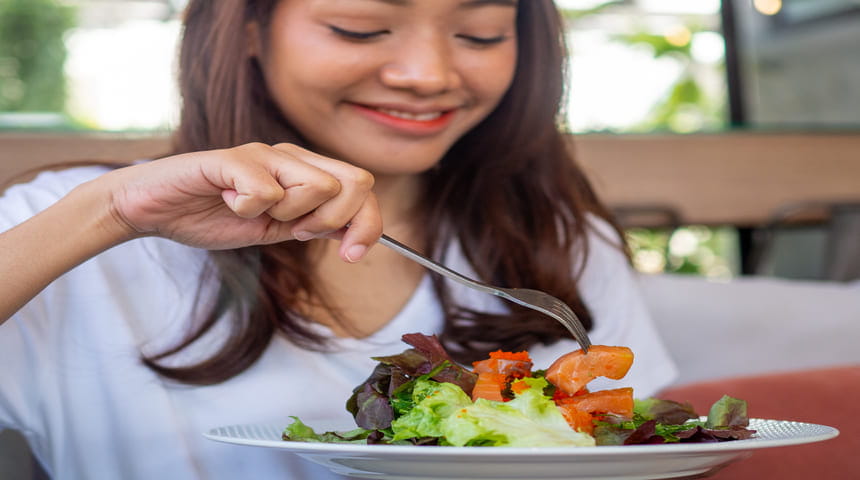As a coveted comfort food, pasta’s popularity makes it a common item in many pantries. With the 2015-2020 Dietary Guidelines for Americans recommending a limit to refined grains, and the dawn of gluten-free, low-carb and designer foods, pasta has become the perfect target for food manufacturers. A robust range of pasta choices, such as veggie, protein and bean now fill grocery shelves, begging the question: Which do I choose?
Label reading is a must in determining the healthiest choices. Be sure to read carefully, make comparisons and evaluate potential health benefits (if any) from eating the specialty pasta. High-protein pasta may not be low in carbs, while spaghetti with added veggie servings may not meet expectations, and many products may not be considered whole grain.
Protein-Based Pasta
Regular white pasta provides 7 grams of protein, 200 calories, 42 grams carbohydrate and 3 grams fiber in a 1 cup serving. Looking at the first ingredient on the list, white pasta is made mainly from white, refined semolina (milled durum wheat flour).
Protein pasta, like white pasta, is made mainly from semolina. There are nominal nutrient differences with the exception of added pea and lentil protein, increasing protein content by 3 grams. Protein pasta, in essence, appears to be white refined pasta with added pea protein. If truly looking for high-protein pasta, consider a bean, pea or lentil variety.
Bean, Pea, Lentil Pasta
Bean pastas contain comparable calories to white pasta, but have double or triple the amount of protein and fiber. Most bean pastas are 10-20 grams lower in carbohydrate compared to their refined white counterpart. It is important to test different brands for consistency and taste, and look for beans to be the first and possibly only ingredient. Carefully follow cooking instructions to avoid mushy results.
Veggie/Wheat Pasta
Labels on veggie pastas proclaim a certain amount of “vegetable servings.” Check the fine print! It takes 2 cups of pasta (a whopping 400 calories) for 1 veggie serving. With white flour as the first ingredient, the pasta is mainly refined grain. Some brands contain vegetable powders while others include dried vegetables. The unknown benefit of the powdered vegetables is not enough to rank this as a beneficial purchase. Consider the more nutritious option of cooking regular white pasta with added carrots, tomato, spinach, garlic and olive oil.
Vegetable-Based Pasta
Hearts of palm linguini, made from hearts of palm, resembles the look and mouthfeel of thick noodles. Very low in calories, hearts of palm linguini is a water-based, low-carb pasta substitute that tastes like the vegetable itself. If looking for a very low-carb alternative for noodles, palm linguini may be an option if seasoned or topped with a red sauce.
Another low-carb pasta substitute, shirataki, is made from the root of a konjac plant. Found in the produce section, shirataki noodles are high in soluble fiber, which adds a firm texture.
Made from fresh spiralized zucchini, zoodles mimic the look and shape of noodles. Zoodles are in the produce section of the grocery store. For a less-expensive alternative, purchase a hand-held spiralizer to make veggie noodles from any vegetable at home.
Grain-Based Pastas
When selecting grain-based pasta, be sure to choose one with 100 percent whole-grain flours listed as the first ingredient. Whole grains help to lower the risk of disease, such as heart disease, diabetes, cancer and obesity. Products may include whole wheat, brown rice, buckwheat (soba), kamut or spelt. Be wary that some, like quinoa pasta, may be a blend of added refined flours.
With a wide selection of pasta at the grocery store, consumers utilizing label-sleuthing skills have the opportunity to make informed decisions based on nutritional quality, dietary preferences and taste. From nutrient-dense bean pastas to vegetable and whole-grain noodles, many healthy choices are widely available.
Rating the Pasta Options
Using refined, white pasta as our barometer (3rd choice), several pasta options are categorized as green (1st choice) or yellow (2nd choice).
|
Product (2 oz serving size) |
Calories |
Protein (g) |
Carb (g) |
Fat (g) |
Fiber (g) |
1st Ingredient |
|
White Thin Spaghetti |
200 |
7 |
42 |
1 |
3 |
Semolina |
|
Protein |
||||||
|
Protein Spaghetti |
190 |
10 |
39 |
1 |
4 |
Semolina |
|
Bean, Pea, Lentil |
||||||
|
Chickpea Rotini |
190 |
11 |
34 |
3.5 |
8 |
Chickpea flour |
|
Red Lentil Rotini |
180 |
13 |
34 |
1.5 |
6 |
Red lentil flour |
|
Edamame Spaghetti |
180 |
24 |
20 |
3.5 |
13 |
Edamame (soy) bean flour |
|
Black Bean Spaghetti |
210 |
22 |
21 |
4 |
11 |
Black beans |
|
Veggie Pasta |
||||||
|
Veggie Penne ½ serving of vegetables in 2 oz |
200 |
8 |
40 |
1 |
2 |
Semolina |
|
Hearts of Palm Linguine |
10 |
0 |
2 |
0 |
1 |
Water, sea salt, hearts of palm |
|
Shirataki |
5 |
0 |
1.5 |
0 |
0 |
Konjac flour |
|
Zoodles |
10 |
1 |
1.8 |
0 |
0.5 |
Zucchini |
|
Grain-Based Pasta |
||||||
|
Fiber-Enriched Spaghetti |
190 |
7 |
42 |
1 |
5 |
Semolina, inulin |
|
Quinoa Spaghetti |
200 |
4 |
42 |
2 |
3 |
Corn flour, brown rice flour, quinoa flour |
|
Brown Rice Spirals |
220 |
4 |
44 |
2 |
2 |
Brown rice |
|
Whole Wheat Thin Spaghetti |
180 |
8 |
39 |
1.5 |
7 |
Whole grain durham |
|
Kamut Spirals |
214 |
10 |
41 |
1.5 |
6 |
Whole grain kamut wheat |
|
Soba Noodles |
200 |
6 |
43 |
1 |
3 |
Whole buckwheat flour |
Choose to Stay in Touch
Sign up to receive the latest health news and trends, wellness & prevention tips, and much more from Orlando Health.
Sign Up





